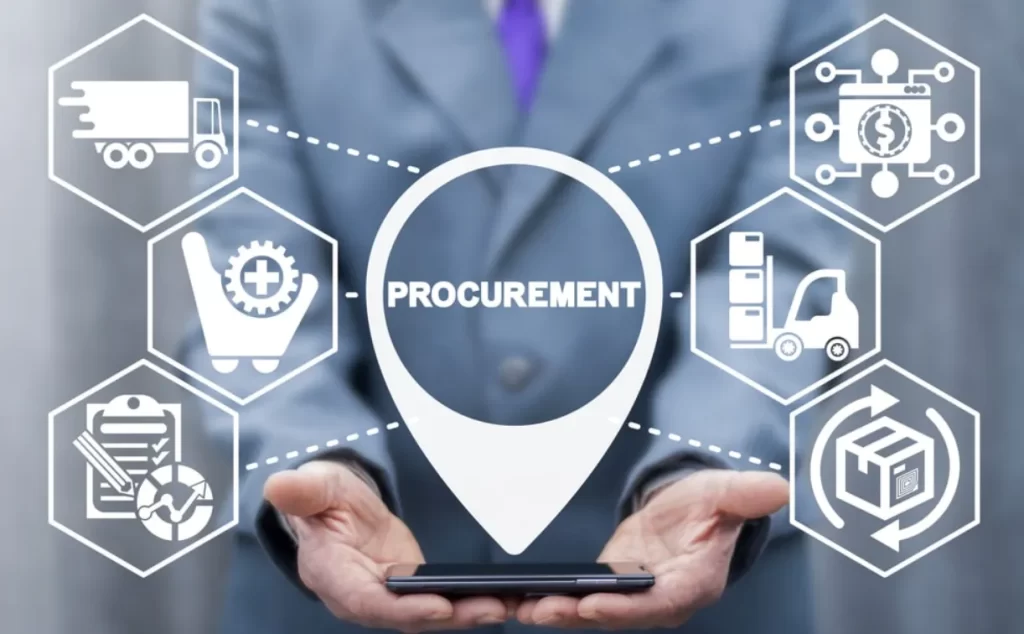Acquisition refers to the act of acquiring or buying goods and services, often for business operations. This concept is predominantly linked with the corporate world, where entities engage in the acquisition of services or products, frequently on a substantial scale. This includes the entire acquisition cycle, which is vital for businesses as they approach the ultimate decision to purchase. While companies can participate in the acquisition cycle as either purchasers or vendors, this discussion primarily centers on the perspective of the acquiring entity.
KEY INSIGHTS:
- Acquisition involves the act of obtaining goods or services, typically in the context of business expenditures.
- The business acquisition process encompasses planning, requesting proposals, and managing payments, often involving multiple departments within an organization.
- Expenditures in acquisition can be categorized into various types based on the needs of the acquisition.
- Most extensive acquisition endeavors incorporate competitive bidding, where several contenders participate.
- The tactical approach to acquisition is distinct from mere purchasing, which is more transactional.
Table of Contents
How Procurement Works

The procurement is identified as the most important business process. Through this, the company has to get necessary goods or services with the budget that was allocated without fail, as their operational profitability depends on them. For instance, needs identification, quotation collection, negotiation, and finalization with the suppliers, all these steps are commonly handled by the accounts payable department. Effective procurement encompasses a host of stages during the processes of planning, payment, and coordination amongst a number of departments.
Types of Procurement

Businesses can engage in several types of procurement, such as:
Direct Procurement
All involved resources and services are included, beginning with the production phase, and all these cover raw materials, equipment, and, indeed, all other components.
Indirect Procurement
This is the category of procurement that refers to the purchase of necessary goods and services for the day-to-day running of the business, though not featuring in bringing direct revenue for the business. Some examples are office essentials, furniture, and promotional material procurement.
Goods Procurement
All tangible items that companies secure via the procurement process to fulfill organizational requirements fall under this category. These could be direct acquisitions like raw materials or indirect purchases like office essentials.
Services Procurement
Similar to the procurement of goods, service procurement is categorized into direct and indirect types. Both types depend on human-provided services. Direct services procurement typically encompasses labor that is integral to business operations, while indirect services procurement might cover services such as on-site security to protect the business environment.
Procurement vs. Purchasing
There is a bit of confusion in the understanding of the two terms since they all entail goods and services obtained; hence, both buying and procurement possess the characteristics of goods acquisition.
It is such a strategic approach focusing on the acquisition of goods and services based essentially on an emphasis on the long-term value of the acquisitions. It involves quite a number of steps (as stated above) that make a whole process. For example, in 2000, “companies are forward in procurement, placing orders well in advance for expected needs to preempt shortages.”
Conversely, purchasing is more of a straightforward, transactional activity that centers on the act of buying goods and services. It typically prioritizes cost over the overall value and is often a response to immediate organizational needs.
Below is a comparative outline of the two processes:
- Procurement: Strategic and value-focused, proactive with an emphasis on forecasting and preparing for future needs.
- Purchasing: Transactional and cost-focused, reactive, aimed at addressing immediate requirements.
Accounting for Procurement

Procurement expenses are typically accounted for in a business’s financial records, reflecting the process’s role in securing goods and services crucial for meeting the company’s revenue objectives. To oversee these critical activities, some organizations appoint a Chief Procurement Officer (CPO). The responsibilities of a CPO include:
- It is setting and maintaining procurement guidelines.
- We are collaborating with the accounts payable department to ensure seamless integration of procurement standards and prompt payment processes.
- I am participating in procurement panels, especially in scenarios involving competitive bidding.
The approach to analyzing procurement operations varies, with distinct methods applicable across different sectors and types of businesses. How a company manages the procurement of direct versus indirect costs can differ significantly, as can the strategies employed by goods-centric versus service-oriented companies in cost management.
Indirect vs. Direct Procurement Costs
Direct expenses encompass the costs associated with producing goods or delivering services, including all elements that constitute the final product. For manufacturing entities, this might include everything from raw materials to the parts that are assembled into the final product. Conversely, retail businesses consider the acquisition costs of merchandise intended for resale to be direct expenses.
Within the world of service providers, wages paid for hours worked actually to deliver those services are often the highest single direct cost. The point here is that procurement affects the company’s gross margin since it is directly related to the direct costs.
On the other hand, indirect procurement acquires help for the operative needs of the company, yet it is not related directly to production or service delivery. This will range from the number of items and services to be used, such as office stationery, marketing and advertising expenses, and consultancy, among others. Usually, an organization will oversee its direct and indirect expenses through different strategies and budgets that represent two different roles they play within the business framework.
Goods vs. Services Procurement Accounting

Procurement plays a critical role in the financial dynamics of both product-oriented and service-centric companies, though they record revenues and expenses distinctively. For firms dealing in goods, procurement is primarily focused on acquiring inventory, highlighting the significance of supply chain management in their operations. These businesses emphasize acquiring tangible products that they can stock, manage, and sell.
Conversely, service-oriented companies generate revenue mainly through the provision of services, not the sale of physical goods. While they might not depend extensively on a supply chain for inventory, they may still need to procure goods, especially if they offer technology-driven services.
Typically, for service firms, the cost of sales is primarily influenced by the labor costs of employees delivering the services, making procurement a less direct factor in their overall expenses. However, these companies tend to incur higher indirect costs, often channeled into areas like marketing, where procurement activities are categorized as indirect expenses due to their nature of supporting the business operations rather than being directly tied to the production or service provision.
Why Is Procurement Important in Business?
Procurement is a significant activity in the demystification of supply chains to businesses to find and form relationships with suppliers who offer a mix of value and cost that is commensurate with meeting alignment with the specific demands of the company. That’s true whether a company is in the market for manufacturing materials, marketing expertise, or office essentials.
For instance, a company can be seeking a vendor for an email security solution that will not have a closing date.
The purchase process is critical in the selection of the right supplier, one who is equal to the task in regard to the business needs and the budget, and finally, avoiding wasting time, money, and investment on unworthy suppliers. While cost reduction is of critical importance amongst the objectives of refining procurement strategies, most paramount is the factor of identifying suppliers that deliver not only quality but also reliability promise and reliance with consistency—partners with proven track records who are able to meet our quality standards and supply demands consistently.
How Procurement & Finance Can Work Together

The process through which strategic steps in an organization have been identified according to the company’s need for products and services, supplier localization agreeing with the organization’s objectives, terms negotiation, price, and then going on to buy and obtain goods or services corresponding to the contracts specified.
In much smaller organizations, procurement could be performed by one person, while in larger organizations, it is usually done by different teams. The teams could work with different suppliers or support the different business units within the company. The input from all these departments may be needed to understand the needs of the organization from a much broader perspective.
There are many corrective actions throughout the life cycle, taking the form of a cycle with procurement, which is not a one-off activity but a continuous process aimed at establishing strong supplier relationships for efficient service and at the most favorable costs.
The ability to maintain supplier performance in those efforts, the increase in profit margins. Quality checks remain an integral part, as it is essential to ensure that the suppliers are keeping up with their commitment and, at the same time, the standards of the company should be maintained. The above discussion can be summed up as follows: Effective procurement is one of the essentials for efficient operation performance, managing cost factors, and quality assurance within the supply chains. It helps businesses not only with short-term goals but further advance them as a launching pad for long-term success.
In effect, strategic sourcing of goods and services avails the firm the opportunity to optimally allocate resources while, at the same time, increasing competitiveness through solid and beneficial relationships with suppliers, among other factors that make up critical constituents of business development and profitability.
Frequently Asked Questions
What is procurement, in simple words?
The purchasing system should support procurement, for example, sourcing of the goods, obtaining the goods, and payment of the goods. Supply chain management is expanded to cover the logistics of even obtaining the goods: shipping, warehouse management, transforming the procured goods into products, and delivering the products to customers.
What is an example of procurement in real life?
Examples of the procurement process in relation to direct procurement within the daily business operations include purchasing the mechanical components required for the production equipment, supply and installation of the industrial machinery, and provision of raw materials needed for manufacturing the finished goods.
Is procurement the same as sourcing?
In business, sourcing and procurement happen to be critical processes, and without them, the purchase of goods or services will have to remain incomplete. Sourcing involves a process where a company acquires products or services from the outside. Contract negotiation and acquisition of the needed materials at a reasonable price are also necessary.
What is an example of procurement in real life?
Examples of joint direct procurement in the everyday business environment include the following: “Purchase of mechanical components for production equipment; supply and installation of industrial machinery; provision of raw materials needed in manufacturing finished goods.
Who needs procurement?
The act of getting service or goods from a third party, for example, vendors and suppliers, when the company has the need. That should be in such a way that the sources and purchases from other goods are of the best quality, considering expenses even as costs.
